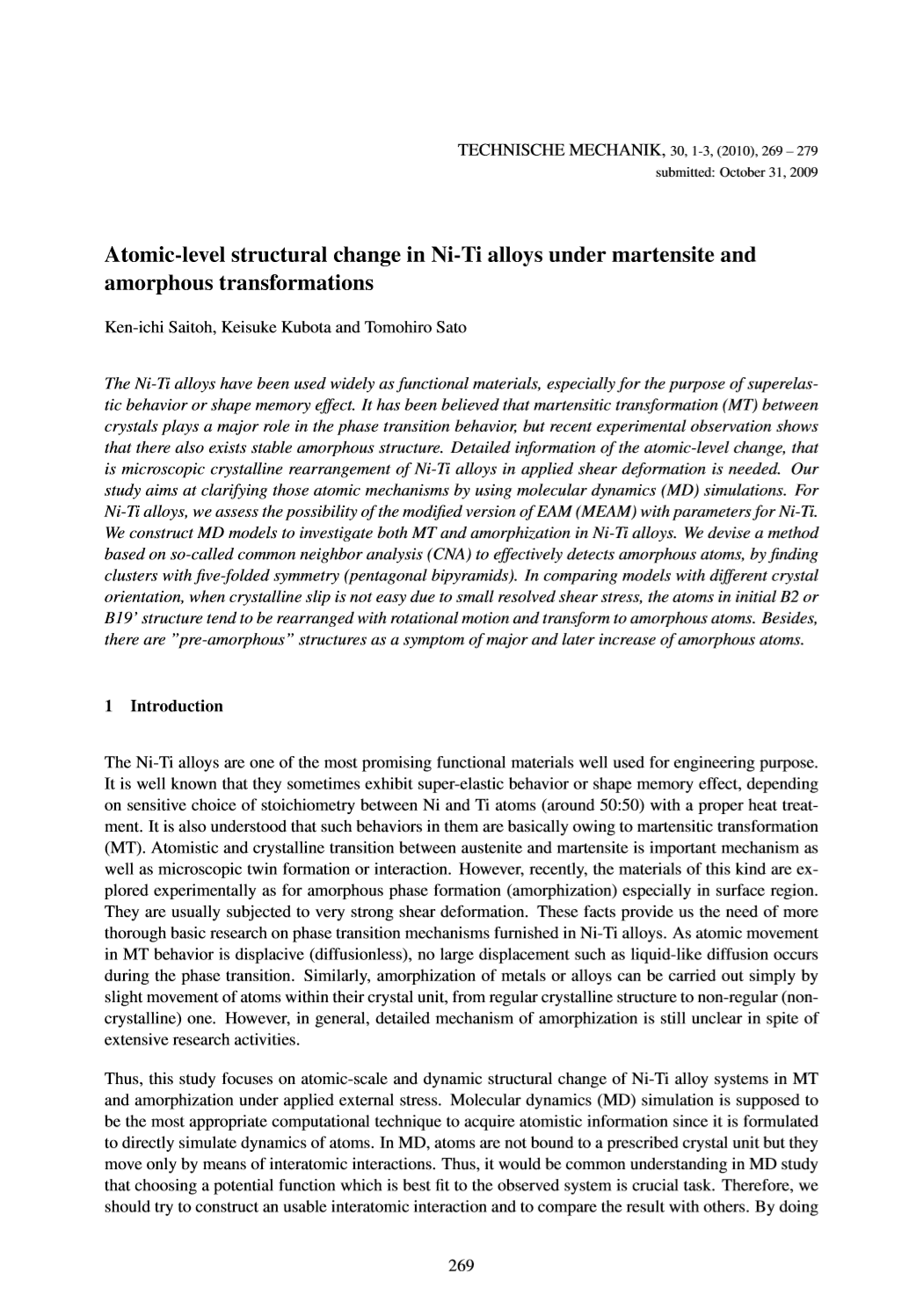Atomic-level structural change in Ni-Ti alloys under martensite and amorphous transformations
Abstract
The Ni-Ti alloys have been used widely as functional materials, especially for the purpose of superelastic behavior or shape memory effect. It has been believed that martensitic transformation (MT) between crystals plays a major role in the phase transition behavior, but recent experimental observation shows that there also exists stable amorphous structure. Detailed information of the atomic-level change, that is microscopic crystalline rearrangement of Ni-Ti alloys in applied shear deformation is needed. Our study aims at clarifying those atomic mechanisms by using molecular dynamics (MD) simulations. For Ni-Ti alloys, we assess the possibility of the modified version of EAM (MEAM) with parameters for Ni-Ti. We construct MD models to investigate both MT and amorphization in Ni-Ti alloys. We devise a method based on so-called common neighbor analysis (CNA) to effectively detects amorphous atoms, by finding clusters with five-folded symmetry (pentagonal bipyramids). In comparing models with different crystal orientation, when crystalline slip is not easy due to small resolved shear stress, the atoms in initial B2 or B19’ structure tend to be rearranged with rotational motion and transform to amorphous atoms. Besides, there are ”pre-amorphous” structures as a symptom of major and later increase of amorphous atoms.





